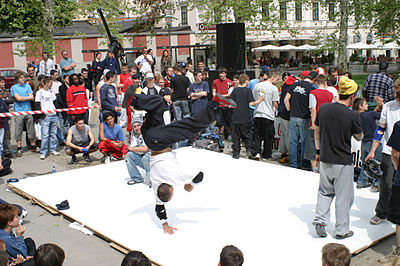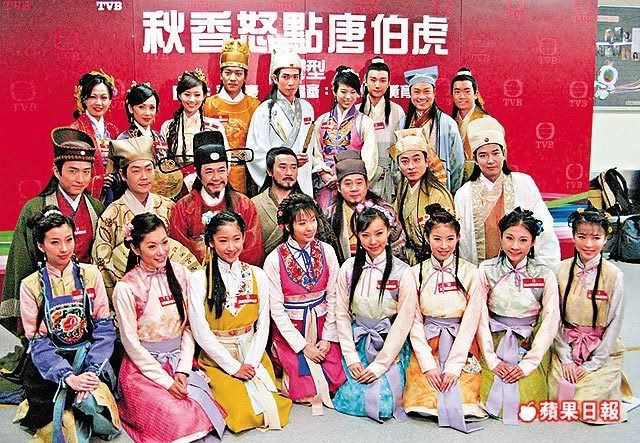Hip Hop Music
============
Hip hop music is a style of music which came into existence in the United States during the mid-1970s, and became a large part of modern pop culture during the 1980s. It consists of two main components: rapping (MCing) and DJing (production and scratching).
Typically, hip hop music consists of intensely rhythmic lyrical form making abundant use of techniques like assonance, alliteration, and rhyme. The rapper is accompanied by an instrumental track, usually referred to as a "beat", performed by a DJ, created by a producer, or one or more instrumentalists. This beat is often created using a sample of the percussion break of another song, usually a funk or soul recording. In addition to the beat other sounds are often sampled, synthesized, or performed. Sometimes a track can be instrumental, as a showcase of the skills of the DJ or producer.
Hip hop began in The Bronx, located in New York City, when DJs began isolating the percussion break from funk and disco songs. The early role of the MC was to introduce the DJ and the music and to keep the audience excited. MCs began by speaking between songs, giving exhortations to dance, greetings to audience members, jokes and anecdotes. Eventually this practice became more stylized and became known as rapping.
By 1979 hip hop had become a commercially popular music genre and began to enter the American mainstream. In the 1990s, a form of hip hop called gangsta rap became a major part of American music, causing significant controversy over lyrics which were perceived as promoting violence, terrorism, promiscuity, drug use and misogyny. Nevertheless, by the beginning of the 2000s, hip hop was a staple of popular music charts and was being performed in many styles across the world.

Social Impact......
Hip hop music is a part of hip hop, a cultural movement that includes the activities of breakdancing and graffiti art, as well as associated slang, fashion and other elements. The popularity of music has helped to popularize hip hop culture, both in the United States and to a lesser degree abroad.
The late 1990s saw the rise in popularity of the "bling bling" lifestyle in rap music, focusing on symbols of wealth and status like money, jewelry, cars, and clothing. Although references to wealth have existed since the birth of hip hop, the new, intensified "bling bling" culture has its immediate roots in the enormously commercially successful late-to-mid nineties work (specifically, music videos) of Puff Daddy and Bad Boy Records as well as Master P's No Limit Records.
However, the term was coined in 1999 by Cash Money Records artist Lil' Wayne on B.G.'s hit single Bling Bling, and the Cash Money roster were perhaps the epitome of the "bling bling" lifestyle and attitude. Though many rappers, mostly gangsta rappers, unapologetically pursue and celebrate bling bling, others, mostly artists outside of the hip hop mainstream, have expressly criticized the idealized pursuit of bling bling as being materialistic.

Hip hop has a distinctive slang, that includes words like yo, flow and phat. Due to hip hop's extraordinary commercial success in the late nineties and early 21st century, many of these words have been assimilated into many different dialects across America and the world and even to non-hip hop fans (the word dis for example is remarkably prolific). There are also words like homie which predate hip hop but are often associated with it. Sometimes, terms like what the dilly, yo are popularized by a single song (in this case, "Put Your Hands Where My Eyes Could See" by Busta Rhymes) and are only used briefly. Of special importance is the rule-based slang of Snoop Dogg and E-40, who add -izz to the middle of words so that shit becomes shizznit (the addition of the n occurs occasionally as well). This practice, with origins in Frankie Smith's non-sensical language from his 1980 single "Double Dutch Bus," has spread to even non-hip hop fans, who may be unaware of its derivation.









 DJ Grandmaster Flash, one of the architects of hip hop DJing.
DJ Grandmaster Flash, one of the architects of hip hop DJing. 




